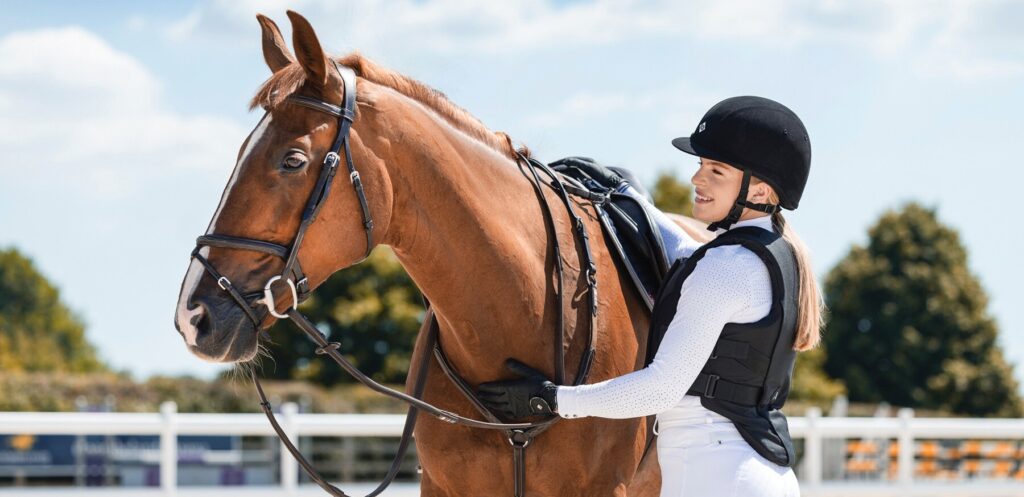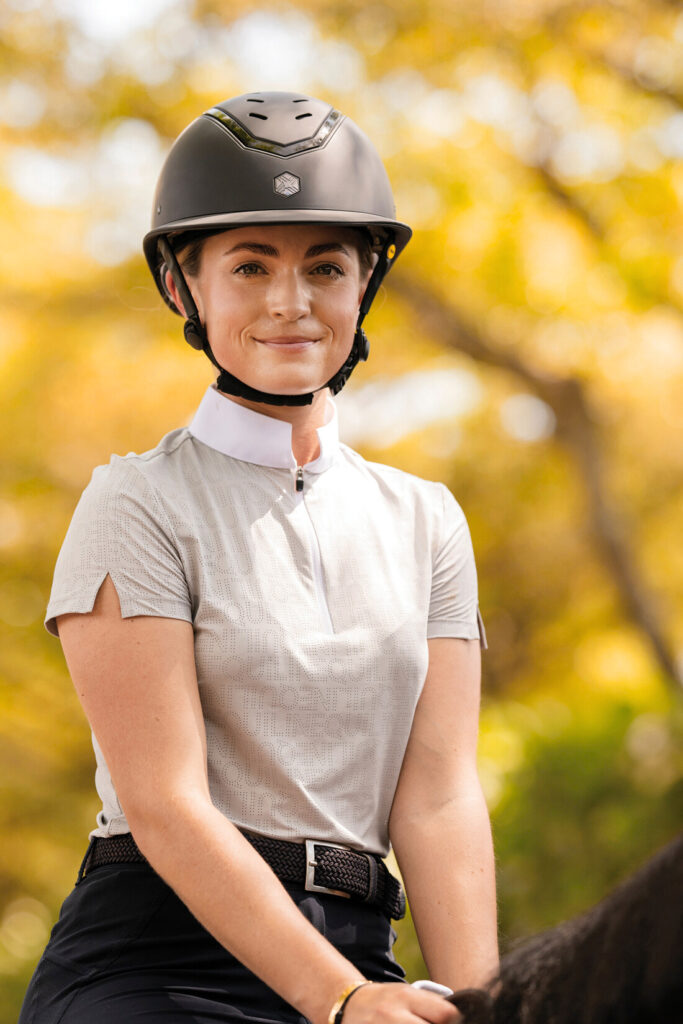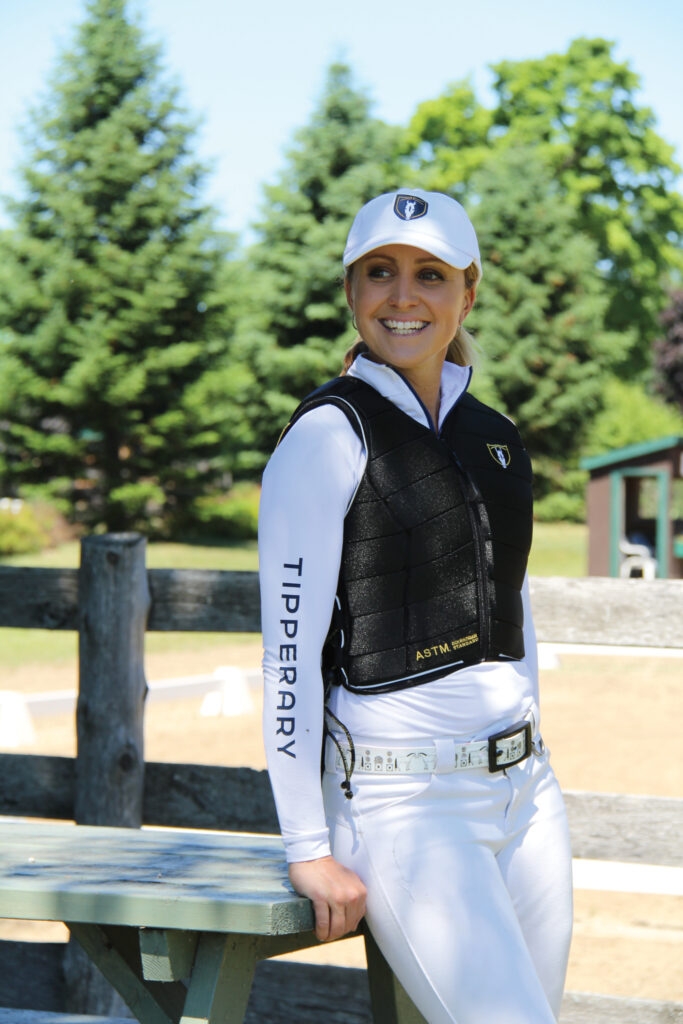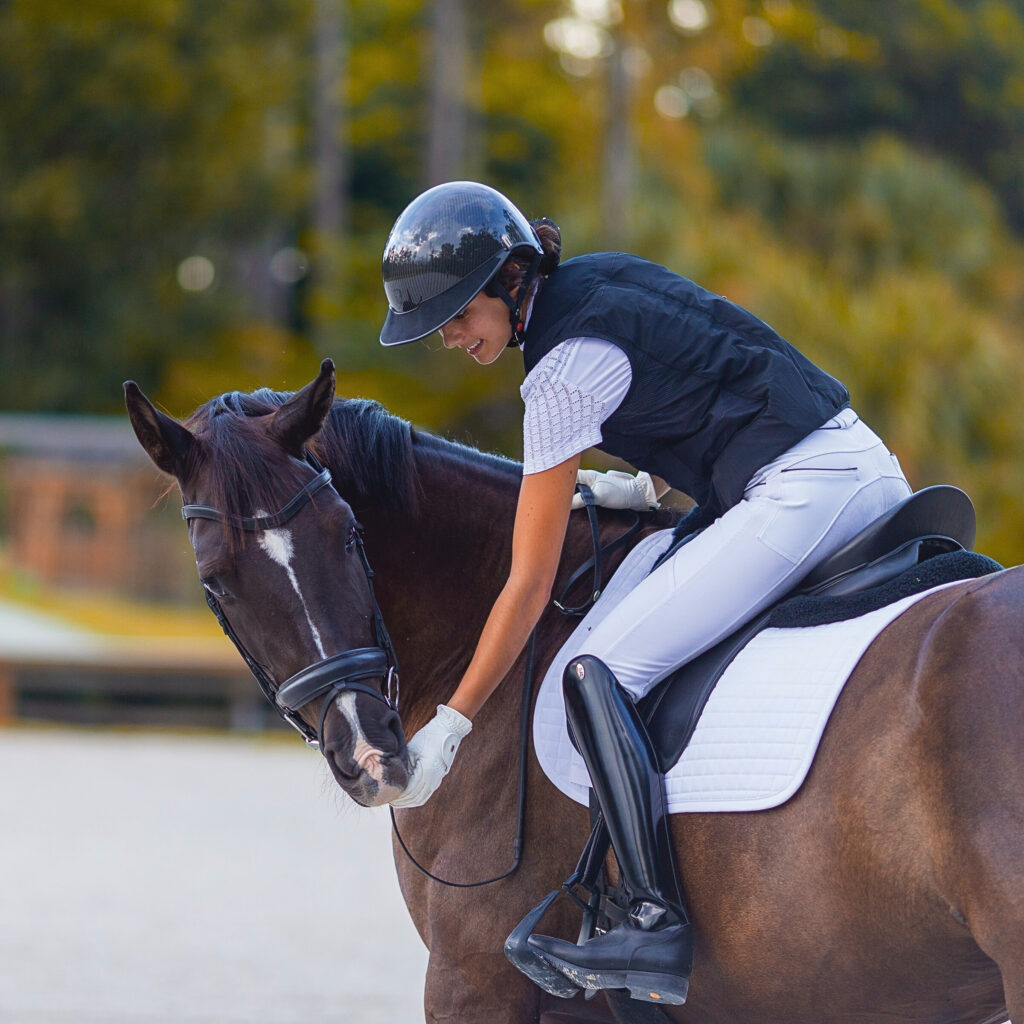
Equestrian sports and horse care are some of the most rewarding parts of working with horses. It is important that you are always aware of your horse and their surroundings and learn how to safely work around them. Whether you’re in the saddle, handling horses on the ground, or simply working around the barn, safety should always be your top priority. By taking a few extra precautions and staying mindful, you can reduce risks and enjoy every aspect of equestrian life in the safest way possible.
1. Always wear a properly fitted helmet
Your helmet is your most important piece of safety gear. Make sure it meets ASTM/SEI safety standards and replace it after a fall or when it shows signs of wear. Check out these education articles on helmet safety, fit, storage and more in our equestrian library here:
Helmet Awareness Articles
2. Consider a safety vest
Body protectors or air vests can reduce the risk of injury during a fall no matter the discipline or level you ride. We carry a huge selection of body protectors for every age, discipline and budget here: Up to 20% Off Protective Vests – Dover Saddlery
3. Wear the correct footwear and apparel
Choose boots or shoes with a durable sole, heel, and closed toe. Avoid flip-flops or sneakers around horses—your feet will thank you if a hoof comes down on them. A heeled shoe is critical for safety by preventing the foot from slipping through the stirrup. If a rider were to fall with their foot stuck in the stirrup, they could be dragged by the horse, causing serious injury. Avoid loose fitting clothing that could get snag, drag or get caught on doors and stalls.
4. Stay updated on safety standards
Familiarize yourself with ASTM guidelines and check with national organizations like U.S. Equestrian or U.S. Pony Club for updates.
5. Practice safe horse handling
Always lead your horse from the left (near) side, at the shoulder and keep a safe distance from hind legs. Always be aware of your surroundings in the barn and arena. Even the calmest horses can be easily spooked when caught off guard. Maintaining consistent habits helps prevent unexpected incidents.
6. Handle lead ropes and lunge lines safely
Never wrap a lead rope or lunge line around your hand or arm. If a horse spooks or bolts, the rope can tighten, causing serious injury and preventing you from safely controlling the situation. This can also trigger additional safety hazards around the barn.
7. Check your tack and equipment regularly
Look for worn stitching, cracked leather, or damaged buckles—tack in poor condition can break at the worst possible time. Just as important, make sure all tack is properly fitted. Ill-fitting equipment can cause discomfort, soreness, or even behavioral issues, putting both horse and rider at risk.
8. Keep stalls and paddocks safe
Inspect for loose boards, nails, or sharp edges. A quick daily check helps prevent injuries you might not notice until it’s too late.
9. Stay visible and aware when riding outdoors
If you’re trail riding or hacking out, wear reflective gear and let someone know your route and estimated return time—or better yet, ride with a buddy. Avoid taking unnecessary risks or making choices that could put you or your horse in danger. Prioritizing awareness and preparation ensures a safer, more enjoyable ride.
10. Never stop learning
Take lessons, attend clinics, and review safety procedures regularly. The more knowledge you gain, the safer you and your horse will be.






